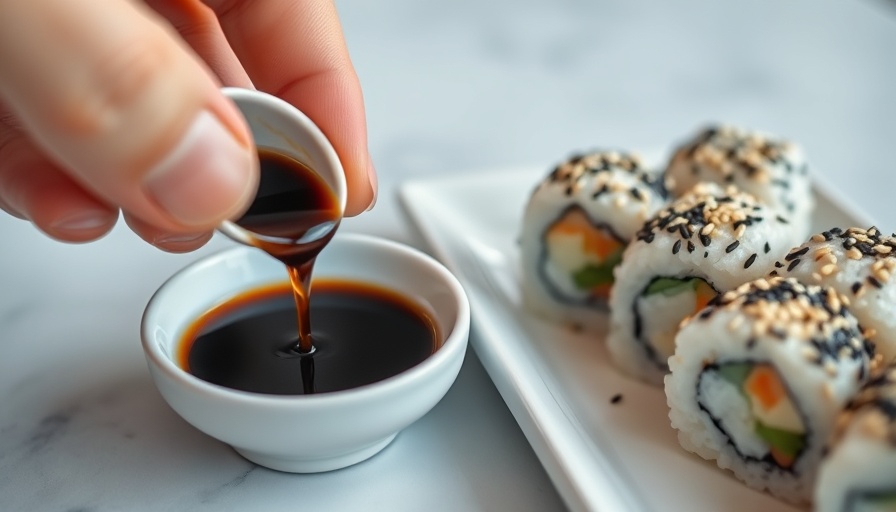
Understanding Coconut Aminos and Soy Sauce
In recent years, coconut aminos have emerged as a popular alternative to soy sauce, especially among those seeking gluten-free or lower-sodium options. Made from the fermented sap of coconut palms and salt, coconut aminos has a distinctly sweeter taste compared to soy sauce, which is derived from fermented soybeans and wheat. This difference in ingredients often leads to curiosity about their nutritional benefits and culinary applications.
The Nutritional Breakdown: A Side-by-Side Comparison
When evaluating food products, understanding their nutritional composition is vital. Coconut aminos generally contain less sodium than traditional soy sauce. For instance, a typical serving of coconut aminos boasts about 90 mg of sodium, while soy sauce can contain upwards of 900 mg or more. This significant difference makes coconut aminos a favorable choice for those monitoring their salt intake. Additionally, coconut aminos contains certain vitamins and minerals, like amino acids, that are absent in soy sauce, potentially offering a slight edge from a nutritional standpoint.
How Flavor Profiles Influence Cooking
The flavor profiles of coconut aminos and soy sauce not only affect their use in recipes but can also impact the final dish's overall taste. The sweetness of coconut aminos pairs beautifully with stir-fries and marinades, often enhancing the flavors without overwhelming the dish, while soy sauce lends a deeper umami flavor. Chefs and home cooks alike may find that incorporating both can provide a delightful balance in their culinary creations.
Cultural Perspectives on Cooking Ingredients
Diving deeper into the use of these sauces reveals cultural preferences that shape our culinary practices. Soy sauce holds a celebrated place in Asian cuisines, from sushi to ramen. In contrast, coconut aminos are typically associated with modern health trends and lifestyle choices favoring cleaner, plant-based ingredients. This cultural shift towards holistic living has made coconut aminos quite popular among health enthusiasts.
The Future of Culinary Choices: Trends to Watch
As the trend towards plant-based diets accelerates, alternatives like coconut aminos are becoming more integrated into mainstream cooking. With increasing awareness of health, many consumers are shifting their focus away from traditional condiments. This trend indicates a promising future for coconut aminos as they may not only rival soy sauce in the kitchen but perhaps even redefine how we perceive flavoring ingredients altogether.
The Bottom Line: What You Should Know
Both coconut aminos and soy sauce have unique flavors and benefits that can enhance your meals. While coconut aminos is lower in sodium and offers a hint of sweetness, soy sauce delivers potent umami depth, making it a staple for specific traditional dishes. It ultimately depends on dietary preferences, ingredient availability, and personal taste.
As culinary worlds converge, embracing a variety of ingredients can lead to mouthwatering dishes while fostering a greater understanding of our food choices. In experimenting with these sauces, you may discover new favorites that uplift your cooking experience!
 Add Row
Add Row  Add
Add 




Write A Comment